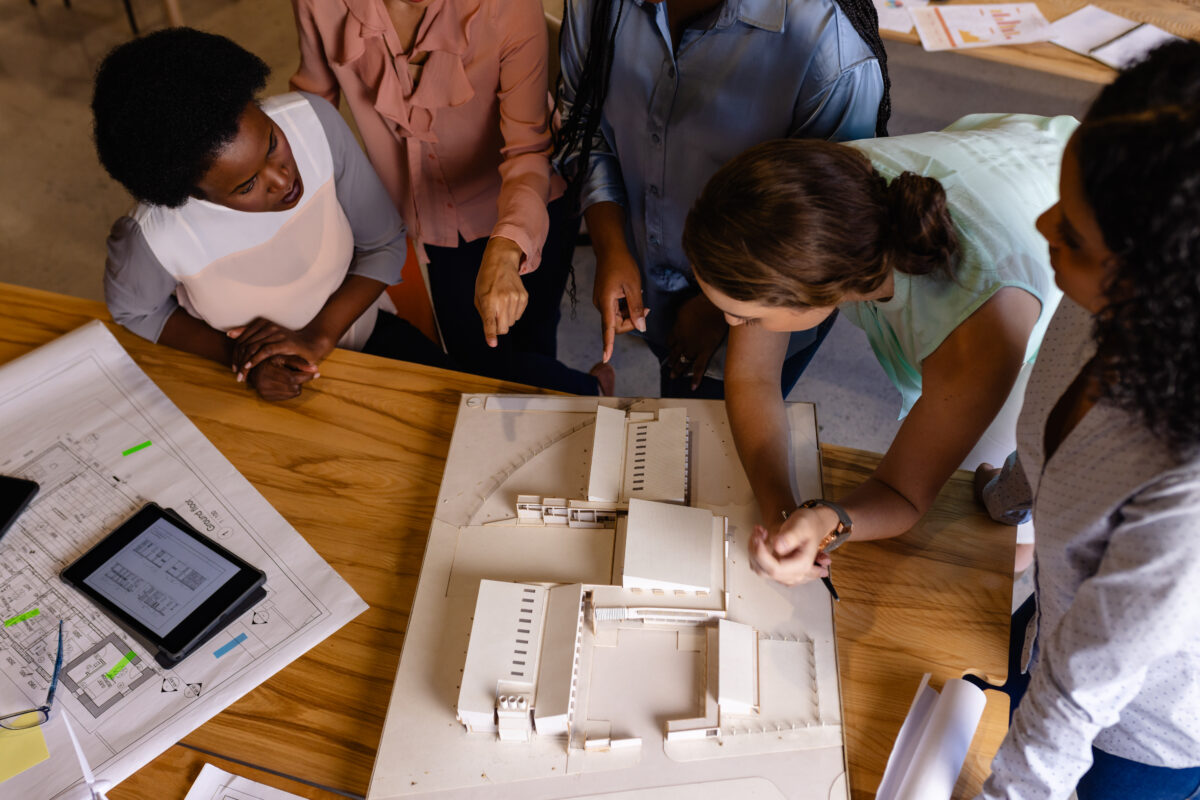
Consider the Mackinac Bridge in Michigan, built in 1957; it still carries thousands of vehicles daily across brutal weather conditions. Compare that to highway overpasses from the 1980s that already need significant repairs. The difference isn’t just age or materials, though both play a role.
The honest answer lies in how structural engineers tackle the fundamental challenges of building something meant to last decades. After examining projects ranging from subway systems to international airports, several key principles emerge that separate successful infrastructure from projects that struggle.
The Real Challenge: Planning for the Unpredictable
Load calculations seem straightforward until you examine the details. Everyone knows a bridge must carry traffic. But how do you account for that January ice storm adding 30% more weight than worst-case scenarios? Or the reality that trucks keep getting heavier despite regulations?
Engineers working on Denver International Airport’s terminal had to account not just for normal passenger loads, but for mass flight cancellations where thousands might be stranded for hours. Add ground vibrations from aircraft, wind loads on that massive roof, and thermal expansion across hundreds of feet – suddenly, “simple” load calculations become incredibly complex.
Safety margins in these projects can be surprising. Highway bridges often get designed for loads 2-3 times heavier than typical traffic suggests. That might look like waste, but it’s actually what keeps structures functional when reality exceeds expectations.
Redundancy takes this thinking further. Smart infrastructure doesn’t assume every component stays perfect forever. Cable-stayed bridges exemplify this – lose one cable, others redistribute the load automatically. It’s an elegant problem-solving based on the acceptance that material fatigue and unexpected stresses occur.
Resilience has become critical as weather patterns grow less predictable. Strong structures resist disaster, but resilient ones recover quickly. The difference between reopening a highway in days versus months can determine whether communities bounce back or face prolonged economic damage.
Learning from Spectacular Successes and Failures
Japan’s earthquake-resistant bridge design offers compelling lessons. Rather than building stiffer, “stronger” structures, Japanese engineers embraced flexibility. Their bridges sway and shift during seismic events, then return to their original position. Results speak volumes – flexible designs survive while rigid ones suffer catastrophic failure.
Airport terminals present different challenges entirely. Atlanta’s Hartsfield-Jackson handles over 100 million passengers annually. The structural engineering quietly manages incredible complexity: terminal roofs spanning hundreds of feet, floors enduring constant aircraft vibration, and climate control across enormous volumes. Solutions typically blend materials, such as steel for flexibility, concrete for stability, and composites where weight reduction is most critical.
The Øresund Bridge, connecting Denmark and Sweden, faced unusual constraints: eight kilometers of open water, constant ship traffic, ice loads, saltwater corrosion, and two different national building codes. The final bridge-tunnel combination demonstrates creative engineering while respecting structural fundamentals.
Meanwhile, hurricane-prone regions, such as the Gulf Coast, have developed their own specialized approaches. The I-10 Twin Span Bridge replacement after Hurricane Katrina incorporated lessons learned the hard way, including precast concrete segments that can withstand 150+ mph winds and foundation systems driven 200+ feet deep into soft delta soils. Cost overruns were significant, but the alternative —losing critical transportation links for months after every major storm —proved far more expensive.
Materials Revolution Changing Everything
Today’s materials aren’t what engineers used 40 years ago. Advances in chemistry and manufacturing are redefining possibilities.
High-performance concrete now achieves strengths once considered impossible while resisting deterioration far longer. For infrastructure, this means lower lifecycle costs and fewer disruptive repairs.
Corrosion-resistant steel alloys have transformed projects in coastal and northern climates, where salt causes havoc. Higher upfront costs pay back multiple times as structures remain intact decades longer.
Composite materials push design boundaries further. Carbon-fiber reinforced polymers offer remarkable strength-to-weight ratios, enabling longer spans and unusual geometries. The recently completed Queensferry Crossing in Scotland utilizes CFRP stay cables that are 20% lighter than their steel equivalents, while lasting twice as long in harsh marine conditions. Cost still limits widespread adoption, but projects like this prove their value in extreme environments.
Ultra-high-performance concrete (UHPC) is appearing in more projects. With compressive strengths exceeding 22,000 psi—compared to 4,000 psi for conventional concrete —it enables thinner sections and longer spans. The challenge isn’t technical capability anymore; it’s convincing budget-conscious agencies to pay premiums for materials that save money over 50-year lifecycles.
Digital Revolution in Structural Design
Building Information Modeling (BIM) brings architectural, structural, and mechanical systems into a shared digital environment, where changes in one system are immediately visible across all disciplines. Fewer construction surprises, fewer costly field conflicts.
Finite Element Analysis pushes simulation capabilities to new levels. Instead of testing one or two scenarios, engineers evaluate thousands: different load combinations, stress concentrations at specific connections, long-term fatigue patterns, even failure modes. Results aren’t just stronger designs, but smarter ones.
Real power comes from timing. Identifying weak points and testing alternatives early allows for changes when they’re still inexpensive – before concrete pours or steel fabrication begins.
Artificial intelligence is starting to influence structural optimization. Machine learning algorithms can now evaluate millions of design variations to find optimal configurations that human engineers might never consider. The Heatherwick Studio’s design for the new Google headquarters utilized AI-assisted structural optimization to create column-free spaces spanning over 200 feet – a feat that would have taken months of manual iteration just a few years ago.
Managing Complex Project Realities
Large infrastructure projects rarely go smoothly. Timelines compress, complexity grows, internal teams stretch beyond limits. Risk isn’t just burnout – it’s errors rippling across entire projects.
Many firms turn to specialized design support during critical phases of their operations. Uppteam collaborates with structural engineering teams, providing additional modeling capacity when workloads spike, detailed simulations to reduce rework, and documentation support to streamline construction handoffs.
Uppteam’s approach extends rather than replaces expertise, giving core teams bandwidth for innovation and leadership while ensuring design details remain accurate and construction-ready.
What’s Coming Next
Infrastructure represents society’s longest-term investments. Done right, structures serve generations. Done poorly, they drain resources for decades.
Current combinations of proven principles, advanced materials, and powerful digital tools create unprecedented opportunities. With climate change driving new risks and demands, these capabilities arrive at precisely the right moment.
Future infrastructure success will belong to projects combining wisdom with innovation – structures that are strong, safe, adaptable, and sustainable. Communities deserve nothing less, and structural design guided by these principles can deliver it.
The next decade is likely to see increased integration between traditional structural engineering and emerging technologies, such as IoT sensors, for real-time monitoring and predictive maintenance. Bridges equipped with fiber optic strain sensors can now alert operators to potential problems years before they become visible. It’s a shift from reactive maintenance to predictive management – exactly what aging infrastructure needs as replacement costs continue climbing.


















